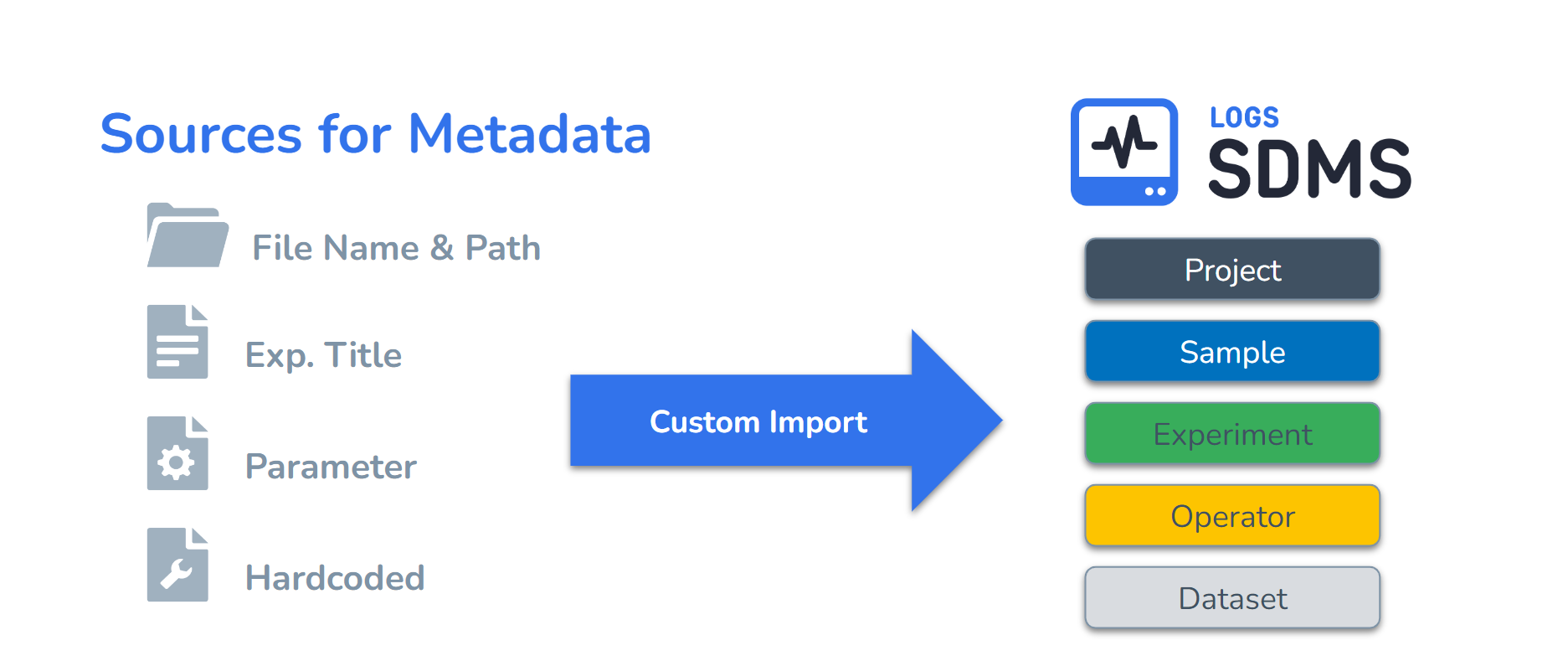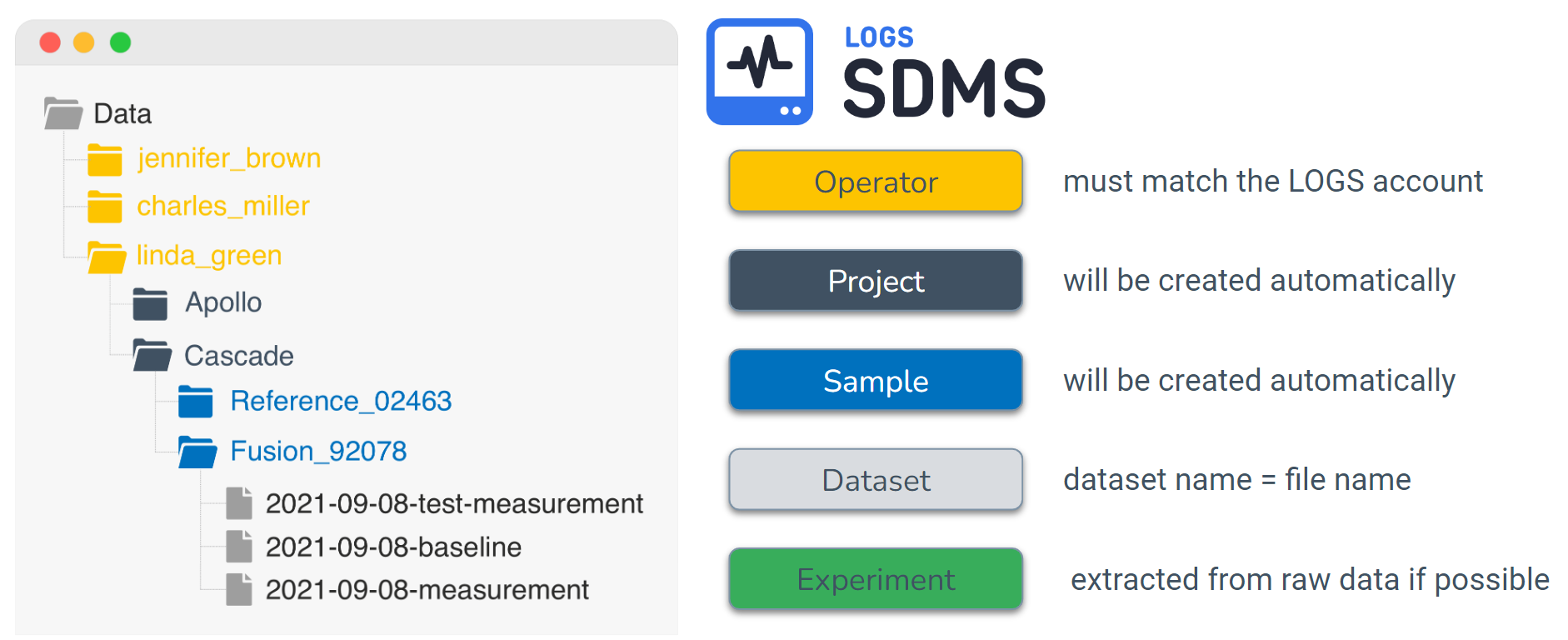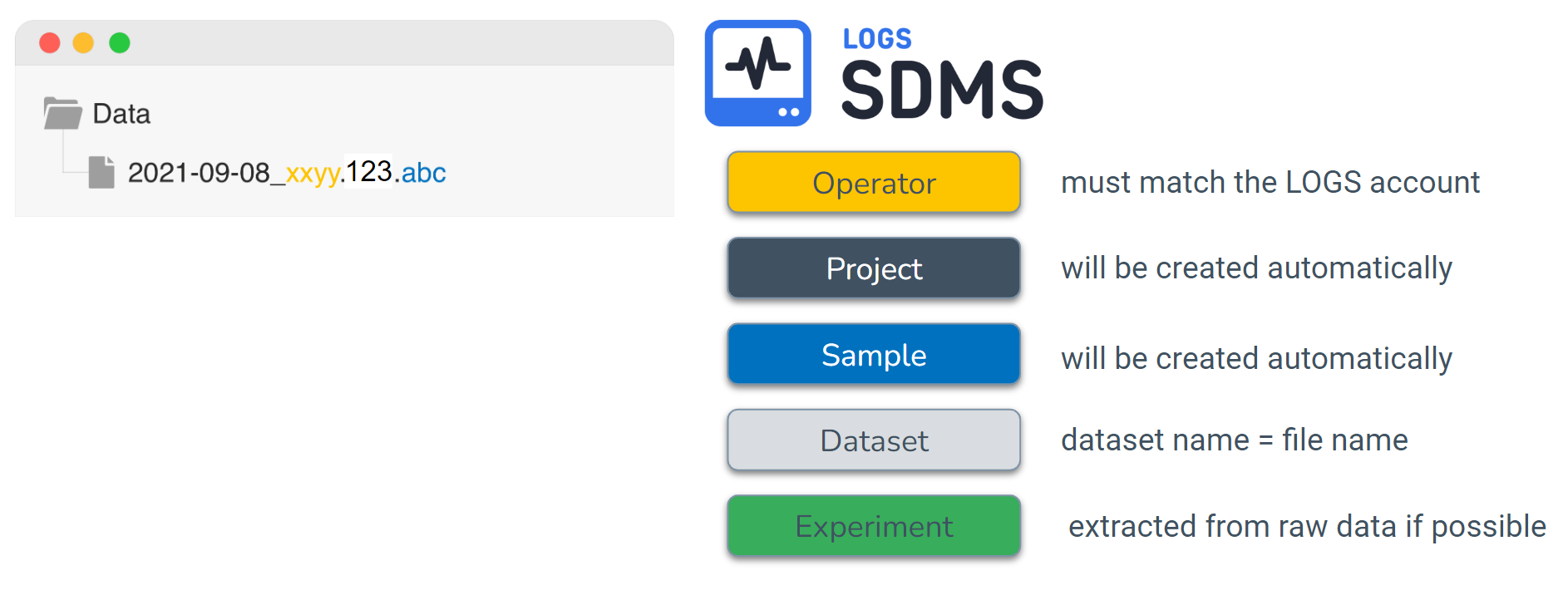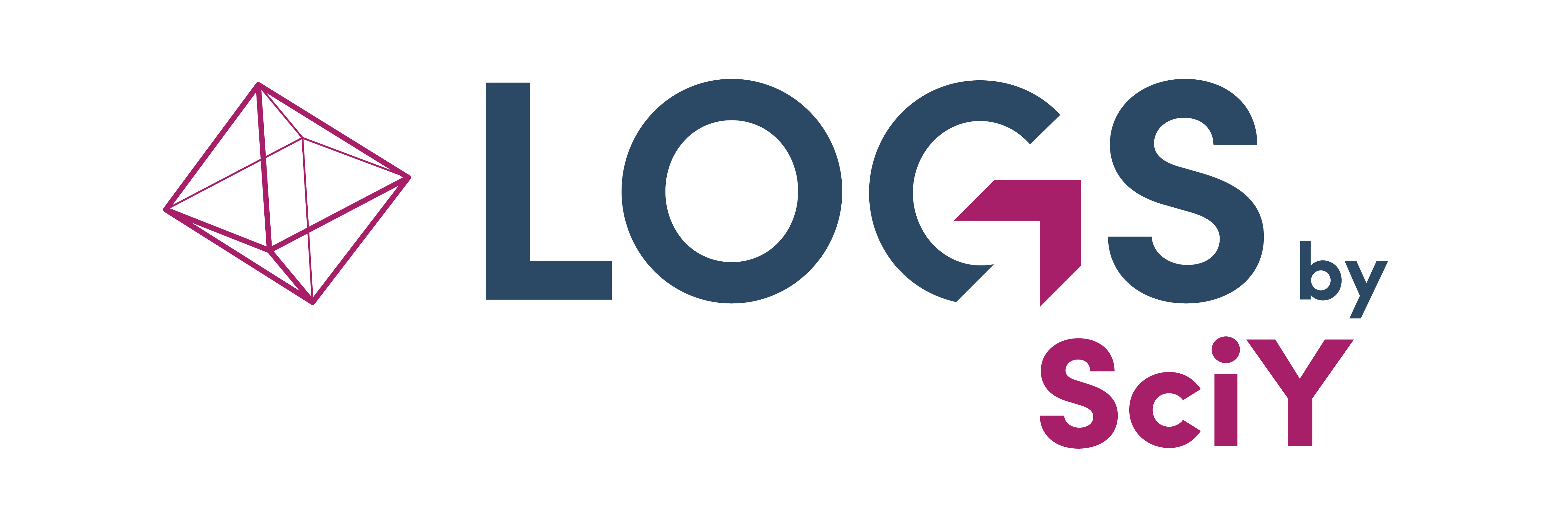Custom Import Configuration
In this article we describe different options, how additional information (metadata) can be added to your measurement data automatically. In addition to that you can always add metadata to your measurement data manually. This will be described in another article.
Organization Levels in LOGS-SDMS
In LOGS-SDMS a measurement (dataset) will be organized in a predefined structure. A measurement has a name and a sample on which the measurement was done. Also a measurement is part of a project and has an operator (the person who did the measurement). Usually experiments can also be of different types, this information will be stored in field called experiment. This is the minimal set of metadata that can be added to the measurement data in addition to the information that comes from the measurement data itself like parameters etc.
Dataset Name: Every measurement has a name. It is per default set as the file name.
Sample: A sample is used for every measurement. Therefore it is usefull to link a sample to a measurement. All information about the composition of the sample can be entered in the sample details.
Project: Projects can be used to organize your measurment data. In addition to that LOGS-SDMS offers a permission system based on projects.
Operator: An operator is the person who did the experiment.
Experiment: Describes the type of experiment.
To add more customized information to datasets, please contact our support team at support@logs-repository.com

Sources for mandatory metadata in LOGS-SDMS.
Sources for additional Metadata
The above mentioned metadata fields can automatically be filled in by already existing information stored in folder paths or experiment titles. Folders can be used to map information about projects, samples and operator. The experiment title per default is the dataset name in LOGS. But also other metadata can be found here, for example the experiment type or the sample that was used.
In the following we describe two different option, how metadata can be mapped to the LOGS organizational structure. A combination of both is always possible.

Folder Path information used to map LOGS-SDMS metadata.

Experiment title information used to map LOGS-SDMS metadata.
